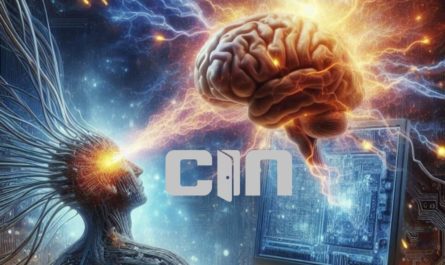This segment is part of the larger story about how Transhumanists are bringing about their Singularity utilizing 5G, Graphene Oxide, mRNA technology.. and your FEAR. I encourage you to take “GQD Particle: The Transhumanist Quantum Agenda” from the top. SPM
We are being genetically modified in stages to see which humans will be fit to move on to the next phase. 1
“We as engineers will coach the process. We’ll be the invisible hand of natural selection, winnowing out the losers and putting the winners through increasingly tougher trials. Our biggest challenge won’t be to create solutions (those will be generated randomly, the way species’ adaptations are), but rather to describe the task we want done and then set up the evolutionary criteria—the environment that challenges the evolving forms to do their best. This is a whole new way for engineers to think.”… “Swarms of variation trials would be running simultaneously with various teams of processors being played off against each other to see which one solves a problem most effectively. Each trial will yield star performers, who, like prize pigs, will be bred again for the next trial. We’ll encourage a mutation here and there, and then let them compete against their peers. Eventually, after a surprisingly small number of trials (thanks to the cumulative improvement power of variation and selection), we’ll have our custom-designed team.”
One of the principal scientists on Vitaliano’s team was Dr. Felix Hong who was instrumental in developing the “operating system” that would allow them to hack into your brain. Dr. Hong, an MD and Professor of Physiology at Wayne State University, served as an assistant professor at The Rockefeller University where he earned his degree in Biophysics. His research interests center around membrane biophysics and photobiology, and their integration in higher executive brain functions such as cognition, learning, and memory. Hong also helped to establish the Molecular Electronics Track for the IEEE Engineering in Medicine and Biology Society in 1988; collective research in molecular biology, biocomputing and electronics required to integrate man with machine. 2
Dr. Felix Hong wrote several articles for Vitaliano’s VXM Technologies that help to explain this biological “operating system”:
- In 2/1/96 he wrote an article on molecular computing as an alternative to neural networks, in ‘Mesoscopic Processes In Biocomputing: The Role Of Randomness And Determinism’ 3, and he also discusses the mysteries of free will.
- In the March1996 issue he wrote a non-technical briefing, ‘Bacteriorhodopsin As An Intelligent Material’ 4, that looks at the potential power of biomaterials for such things as high speed memory devices.
- In a 1998 article he deals with consciousness as well as artificial intelligence. An alternative approach in coping with the information explosion is presented, in what the author calls “picture-based” learning. The article attempts to explain how this approach works on the basis of cognitive science, artificial intelligence, and biocomputing. 5
Hong also participated in several VIPSI (VIP Symposia on Internet related research in the MIT domain) 6 that is described as a “small family type conference” available exclusively to only elite scientists 7, and whose partners included Intel, HP, Sun Microsystems (Oracle) etc. 8
At the heart of Dr. Hong’s research is a protein pigment called Bacteriorhodopsin; a photosynthetic bacterial system containing a membrane protein similar to the rhodopsin found in humans which is integral to the phototransduction mechanism in vision. Bacteriorhodopsin acts by capturing light energy (Protons) across a cell membrane which is then used to generate the energy fuel within biological systems called ATP (Adenosine Triphosphate). The Bacteriorhodopsin molecule is purple and can absorb green light with maximum wavelength absorptions at 568 nm and 610 nm respectively. It exists as two corresponding forms which can be interconverted with high speed and efficiency by using different excitation wavelengths, thus this is an example of a high efficiency, optically-coupled molecular switch.
In this 1991 “Bionics Research Report” submitted by NASA 9, Dr. Felix Hong’s research is described as a highly efficient “pattern recognition system” for molecular “optoelectronic” computer devices required for cellular automation. What is optoelectronics? Optoelectronics is the study and application of light-emitting or light-detecting devices. It is widely considered a sub-discipline of photonics; the study and application of the physical science of light.
This “Bionics Research Report” includes several papers authored by Dr. Hong which provide insight into the mechanism of this molecular optoelectronic system. Overall, the science cited in this report shows that they were developing an “operating system” that would be sensitive to visual images/input (i.e. pattern recognition) that was amenable to genetic modification. The funding agency was the NIH:
“The light sensitive macromolecule, Bacteriorhodopsin, isolated from Halobacterium halobium, has five properties that make it attractive as a molecular electronic device. First, the molecule is stable. Second, it is fast acting. Third, it undergoes a cyclic photoreaction that allows for its regeneration. Fourth, it can be arranged is a precise way in Langmuir-Blodgett films. Fifth, it is amenable to gradual evolutionary modification through recombinant DNA and protein engineering techniques. The authors show that by using pulsed light inputs, the waveform and magnitude of the signal are predictable. It should be possible to exploit these interactions to produce a device that recognizes patterns by means of spatiotemporal integration of signals.” 10
Hong, Felix T.. Wayne State University Department of Physiology 540 Canfield Ave. Detroit, MI 48201 E-MAIL: Phone: (313) 577-1538 Fax: (313) 577-5494
Project Title: A Thin Film-Based Molecular Optoelectronic System
Funding Agency: NIH
Classifiers: Mechanisms, Molecular Electronics
“The research is centered around photobiological membranes and the R&D of molecular optoelectronic devices. A comprehensive analytical methodology for the photoelectric effect in photobiological membranes was developed using a combined electrophysiological and electrochemical approach. Membrane reconstitution techniques are emphasized. Collaborative work also involves protein chemistry, flash photolysis, and genetic engineering. Recent work is focused upon retinal proteins, such as Bacteriorhodopsin, halo rhodopsin and rhodopsin with the aim of utilizing these molecules as building blocks for device construction and of elucidating nature’s design principles via “reverse engineering.”
NASA based the necessity of this research for its space mission program which would require the automation of its land rovers and other autonomous machines. Unfortunately, the funding agencies failed to recognise that “genetic engineering” was not a technique required to build machines. It was obvious that NASA was a scientific arm of the “Transhumanist Quantum Agenda.”
This research opened up the field of Optogenetics which would enable the optical manipulation of selected cells by inserting specific “light-sensitive” proteins such as Bacteriorhodopsin which could then be coupled to various biological functions. In the retina, optogenetics makes it possible to convert different retinal cells into “artificial photoreceptors”; light-controlled gene technology. Light stimulation can then be used to inhibit the cells thereby turning gene expression on or off. This appears to be the direction Dr. Felix Hong when he presented his work in China in 2013 in optogenetics. 11
In this 2019 book “Membranes to Molecular Machines: Active Matter and the Remaking of Life,” Dr. Hong is described as a “biochip” enthusiast with a keen interest in “Biosensors and Biocomputers.” “The most important model system for a molecular computing element in the 1980s was Bacterial rhodopsin (BR), and the reasons listed by Hong sound familiar: He took up the concept shaped in the 1970s of the protein as a “pump” or “photosynthetic device” that could serve as a “prototype for biochip research and development,” whereas the related visual system represented a “light-activated switch, similar to a phototransistor.” Of interest where the abilities of these molecules to react to light by changing conformation (switching) or by producing a photoelectrical effect (pumping). These features represented “by nature” what those interested in biological computers were looking for. Moreover, BR seemed to lend itself to technological uses: The substance was easily prepared and purified; it remained active for a year in an artificial environment; it was one of the best understood systems; and it displayed sufficient complexity to be engineered by the methods of protein chemistry or recombinant DNA.” 12
In a 1997 book titled “Biomimicry” by science writer Janine Benyus, Dr. Micheal Conrad a co-worker of Dr Felix Hong had this to say about the Bacteriorhodopsin operating system, “There is no infrastructure in molecular electronics as yet. You can’t go to a catalog and order parts to make a computer like this. Biosensors are the closest thing we have, and we would no doubt build off that technology for receptor and readout parts of the processor. But everything else—the macromolecules, the system design, the software—it all has to be made from scratch.”
Dr. Conrad refers to this process as “directed evolution” where the global elite control and manipulate the body’s proteins and genes to achieve the desired result in creating the SINGULARITY… THE ONE… that can survive the process. You see, COVID-19 infection was never intended to kill you (well not instantaneously) but to insert the operating system that would gradually transform your body. As I speak we are all Guinea pigs in their live experiment:
“We as engineers will coach the process. We’ll be the invisible hand of natural selection, winnowing out the losers and putting the winners through increasingly tougher trials. Our biggest challenge won’t be to create solutions (those will be generated randomly, the way species’ adaptations are), but rather to describe the task we want done and then set up the evolutionary criteria—the environment that challenges the evolving forms to do their best. This is a whole new way for engineers to think.”… “Swarms of variation trials would be running simultaneously with various teams of processors being played off against each other to see which one solves a problem most effectively. Each trial will yield star performers, who, like prize pigs, will be bred again for the next trial. We’ll encourage a mutation here and there, and then let them compete against their peers. Eventually, after a surprisingly small number of trials (thanks to the cumulative improvement power of variation and selection), we’ll have our custom-designed team.”
The space shuttle experiment was conducted by Dr. Robert Birge, Director of the Center for Molecular Electronics at Syracuse University. The experiment was sponsored by the W.M. Keck Foundation, and BioServe Space Technologies. Robert Birge wrote about the Rhodopsin project in Scientific American in 1995: “Many aspects of this ambitious project are still considered military secrets and may never be revealed.” He wrote that Yuri A. Ovchinnikov, who directed the Soviet rhodopsin project, convinced the military that by “exploring bioelectronics, Soviet science could leapfrog the West in computer technology. The details of their most impressive accomplishment, a processor for military radar, remain obscure.” 13 Birge describes the mechanism of this Bacteriorhodopsin “operating system” in the last Chapter of the book “Biomimicry.” 14
If there are any computer programmers out there reading this I suggest you figure a way out of this experiment. Here are other references: 15 16 17
Dr. Birge also holds several patents on this Bacterial Rhodopsin molecule and operating system: 18 19 20
Bacterial Rhodopsin can also act as a Photovoltaic Cell. A photovoltaic (PV) cell, commonly called a solar cell, acts to convert sunlight directly to electricity. Some PV cells can convert artificial light into electricity. Sunlight is composed of photons, or particles of solar energy. Bacterial Rhodopsin acts as a Photon Pump generator when exposed to light and produces ATP energy (fuel). The majority of ATP synthesis occurs in the mitochondria of the cell generating approximately thirty-two ATP molecules per molecule of glucose that is oxidized; the more sugar we consume the more ATP produced for the NWOs electricity harvesting factory!
This chemical energy is being converted to electricity and being harvested on the quantum field as we speak. We are, as Franco Vitaliano describes… “solar cells” until of course our mitochondria which help to produce this energy burn out from exhaustion. 21 In theory, the more energy you use up yourself the less harvesting they can accomplish and the less damage to your body. In light of this new information, we all need to decrease our sugar and carbohydrate consumption… staying away from sunlight, computer devices and the TV, in the dark in an underground cave wouldn’t hurt either. This may be the reason behind Klaus Schwab statement that survival in the new world would be based on how fit you are:
Recently, Elon Musk has revealed his disagreement with the popular notion that sugar is unhealthy. This came about when Peter Diamandis, Executive Chairperson of the X Prize Foundation, took to Twitter to call sugar ‘poison’. Without wasting any time, Musk replied to Diamandis’ post, stating that he eats a donut every morning and is still alive, implying that sugar is not as harmful as some might believe. The conversation between the two continued, with Diamandis reframing his claim to say that sugar is a “slow poison.” 22 23
This was the reason why the Human Genome Project and the Human Proteome Project were so vital to their Agenda 2030. The NWO needed to know which genes and which proteins to manipulate with this Nanotechnology in their game of “Let’s play Natural Selection” using the entire global population! 24
CIN has already written about how our neurons interface with the cloud. We have proposed that information is transmitted along the Quantum Superhighway via Photons (blue/green/infrared light) through the eyes, and to a lesser extent through the skin. We propose they are doing this to control your brain and harvest human energy. You now have what we believe to be the “operating system” for this mechanism that could directly control the brain (CPU) and alter genes through light modulation and visual images. We have all been hacked!
On an aside: The “X” Statue from the “Hunger Games represent the Capital’s lady justice. Our lady justice has a scale and one sword; the sword indicates justice and the scales indicate fair and equal treatment under the law. Their lady justice has two swords and no balanced scale indicating that their justice system, similar to the “Hunger Games,” is unfair where power is one-sided. For the NWO, killing and manipulation is their MO. The two crossing swords “X” symbolize that the “Hunger Games 2030” have begun.
For our protocols on deactivating the nano technology, see; “Deactivating the Graphene Quantum Dots & Decoupling your Brain from the Clathrin mRNA Neural Interface”, and remember, NO FEAR.
- Rhodopsin: The Operating System of the Clathrin GQD Neural Interface Malware: CIN, February 12, 2024 ↩︎
- Felix Hong, M.D., Ph,D, – Physiology – School of Medicine: Wayne State University ↩︎
- Mesoscopic Processes In Biocomputing: The Role Of Randomness And Determinism ↩︎
- Bacteriorhodopsin As An Intelligent Material ↩︎
- A SURVIVAL GUIDE TO COPE WITH INFORMATION EXPLOSION IN THE 21ST CENTURY: PICTURE-BASED VS. RULE-BASED LEARNING ↩︎
- IPSI Belgrade: archive.org ↩︎
- IPSI Belgrade: archive.org ↩︎
- Wayback Machine: archive.org ↩︎
- 19920006315.pdf: nasa.gov ↩︎
- Hong, F. T. and Conrad, M.; The bacteriorhodopsin membrane as a prototype molecular electronic device., In Molecular Electronic Devices, F.L. Carter, R.E. Siatkowski, H. Wohltjen (Editors), Elsevier Science Publishers B.V., 1988. ↩︎
- Web of Science – Little Otter blog post – page 9: sciencenet.cn ↩︎
- Membranes to Molecular Machines: Active Matter and the Remaking of Life 022662515X, 9780226625157: DOKUMEN.PUB ↩︎
- Membranes to Molecular Machines: Active Matter and the Remaking of Life 9780226625294: DOKUMEN.PUB ↩︎
- Biomimicry: Janine Benyus ↩︎
- Computer Memory Based On Protein Bacterio-Rhodopsin – Full Report: PDF | Computer Data Storage | Random Access Memory (scribd.com) ↩︎
- Protein Basic Memory Seminar Report: PDF (scribd.com) ↩︎
- Protein-Based Computers on JSTOR ↩︎
- US9023989B2 – Protein-based photovoltaics and methods of use: Google Patents ↩︎
- US8883719B2 – Bacteriorhodopsin protein variants and methods of use for long term data storage: Google Patents ↩︎
- US5228001A – Optical random access memory: Google Patents ↩︎
- Franco & Gordana Vitaliano: The NWO’s Clathrin Neural Brain Snatchers: CIN, February 24, 2023 ↩︎
- Elon Musk News: Elon Musk believes sugar is not ‘poison’, reveals he eats donuts daily but is still healthy: The Economic Times (indiatimes.com) ↩︎
- https://twitter.com/PeterDiamandis/status/1640729526035423233 ↩︎
- Nazi Big Pharma, FDA & Los Alamos National Laboratory Hold the Keys!: CIN November 04, 2021 ↩︎




One thought on “The Living Matrix: Hunger Games 2030”